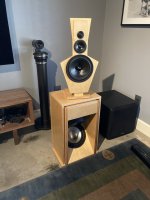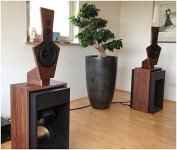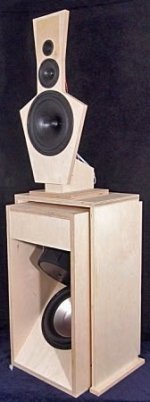You assume wrong, here its mated with all open baffle speakers.
The advantage is dipole, figure eight, pattern of radiation. Less boomy clean open sound. Open baffle bass is harder to achieve, since due to cancelation it requires eq and preferably high xmax woofers. But if you like resonant boom boom bass pressurizing your room, stay away from open baffle.
The advantage is dipole, figure eight, pattern of radiation. Less boomy clean open sound. Open baffle bass is harder to achieve, since due to cancelation it requires eq and preferably high xmax woofers. But if you like resonant boom boom bass pressurizing your room, stay away from open baffle.
Attachments
I think the original poster may not have been making an assumption, but was perhaps saying, "assuming the LXsub4 is mated with a sealed box loudspeaker . . . ."
https://www.linkwitzlab.com/LXmini/LXstudio.htm
"LXstudio is 3-way loudspeaker that combines the LXmini with two LXsub4 dipole woofers."
. . .
"Dipole woofers have the advantage of less room mode excitation and thus preserve articulation in bass sounds"
https://www.linkwitzlab.com/LXmini/LXstudio.htm
"LXstudio is 3-way loudspeaker that combines the LXmini with two LXsub4 dipole woofers."
. . .
"Dipole woofers have the advantage of less room mode excitation and thus preserve articulation in bass sounds"
Ok, i assumed wrong that he assumed wrong. Still, dipole bass is way different than sealed or any other.



